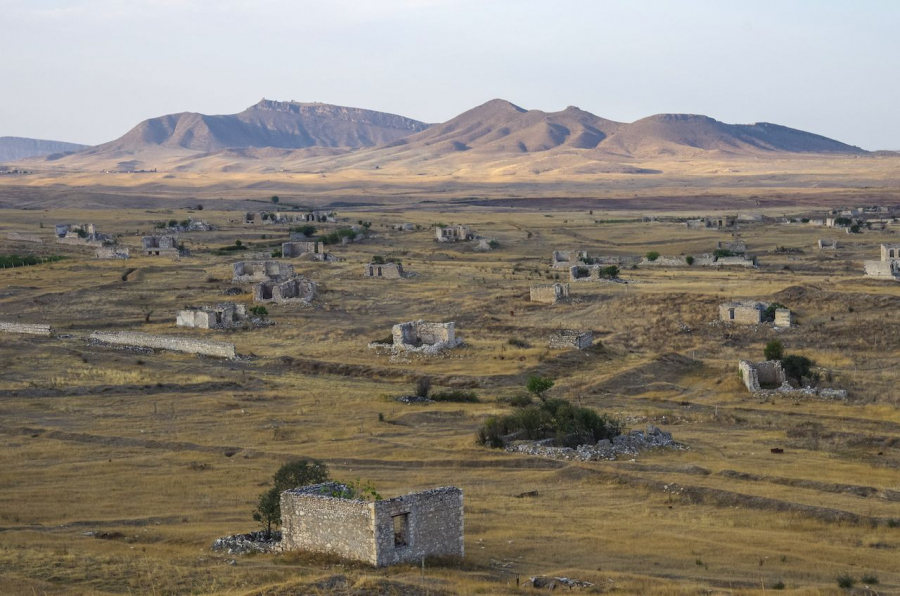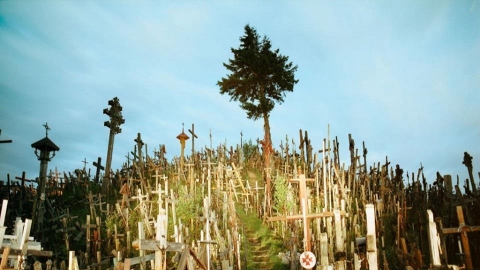If you’re a traveler with a taste for spooky destinations, a trip to one of these towns should be on your bucket list. From a village swallowed by a forest in China to an abandoned factory on a Japanese island, Asia’s ghost towns are the perfect destinations for thrill-seekers.
Hashima Island, Japan

Hashima Island, Nagasaki, Japan
An island holiday is the perfect addition to any trip, although the island may not be the ideal destination – there are no white sand beaches, luxury resorts or paddleboard rentals. Located off the coast of Nagasaki, Hashima Island was acquired by Mitsubishi in 1890 for coal mining, and remained in use until the late 20th century. When oil replaced coal as the main fuel in the 1960s, and rumors of forced labor arose, the mine closed in 1974 and the islanders gradually left.
The island opened to tourism in 2009 and remains a fine example of the effects of weather and seawater on abandoned buildings. It is easily accessible from Nagasaki, the target of a nuclear attack in 1945, and is itself considered a “creepy” destination in Asia.
Bokor Hill Station, Cambodia

Abandoned church at Bogor Hill station near Kompot, Cambodia
Once a popular retreat for the French elite, Bokor Hill Station is now perhaps the last stop on the tourist calendar. However, true adventurers will enjoy the ruins and appreciate the spooky atmosphere. Located about 23 miles west of Kampot in southern Cambodia, the station was abandoned by the French after the First Indochina War due to local insurgencies. It was revived in the 1960s with the opening of a casino, but was abandoned again in the 1970s.
You can still see bullet holes in the French colonial buildings, and the ruins of the original Bokor Palace, which was the town’s centerpiece. Visitors can hike up nearly 1,000m to see the town’s ruins, including the old Catholic church from the 1920s.
As if the atmosphere here wasn't creepy enough, it is rumored that over 900 people died during the construction of Bokor Hill Station, due to the humidity and harsh conditions here.
Hou Tou Wan, China

China's abandoned fishing village of Houtouwan
Houtouwan, a fishing village located on Shengshan Island in Shengsi County, Zhejiang Province, was once a thriving fishing community. Today, due to lack of access to education, food supplies, and lack of electricity and running water, the island has been abandoned since the early 1990s, although it remains popular with tourists.
The town of Hou Tou Wan looks like it’s being slowly swallowed by the jungle, with many of the dilapidated houses covered in thick ivy. You can hike to the top of one of the island’s many hills for sweeping views of the fishing village beneath the dense vegetation. Some of the original villagers still remain, although they lack modern amenities.
Bhangarh, India

Bhangarh, India
Considered one of the most haunted places in India, Bangarh is home to a number of strange phenomena, including strange lights at night, eerie music, and tales of curses that date back centuries. Rumor has it that the 17th-century town and its forts were cursed after a Dalit priest attempted to cast a love spell on a princess, but the plan went awry and he was crushed to death by a boulder. Locals believe the curse left the village desolate and inhabited by ghosts forever. Because spirits are said to roam the area after sunset, the Archaeological Survey of India has banned visitors from entering after 6 p.m.
Located 53 miles from Jaipur, the well-preserved ruins of Bhangarh include temples, communal halls, markets, villas, and royal palaces. Just remember to visit during the day, or you may never return.
Agdam, Azerbaijan

Ruins of the town of Agdam
The transformation of Agdam from a bustling metropolis to a ghost town is a dramatic story. Founded in the early 19th century, Agdam was formerly the capital of Agdam County and its population grew to over 23,000 by 1979. However, in the 1990s, the city was largely destroyed during the Armenian occupation, with its buildings looted and many – including the mosque – heavily vandalised. Now abandoned and in ruins, the city remains in a volatile position at the crossroads of Georgia, Armenia and Russia.
The town’s location and mass migration mean it’s unlikely that Agdam will regain its former glory for a long time to come. Interestingly, although the town’s old football team has relocated, they’ve kept the name Agdam out of respect for their heritage, despite no one having lived in the town for over 25 years.



































